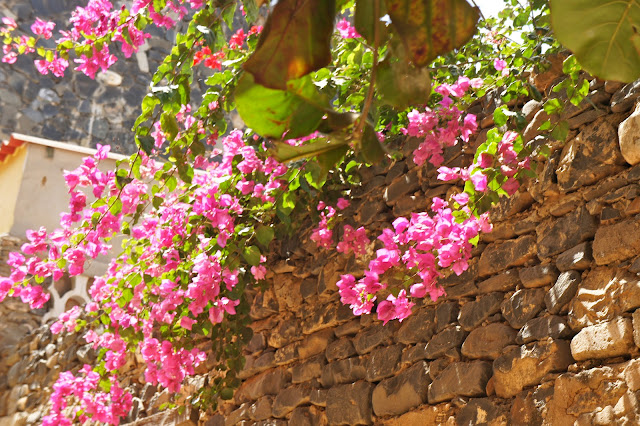Sun 2/19/12
Goree Island, Senegal
Day4
Goree Island
established April 22,1441
Goree is French for "good harbor"
The name certainly doesn't match with what went on in this tiny island between the 16th and 19th centuries when wooden ships sailed from there with human beings in chains making a dangerous voyage across the Atlantic.Our trip to Goree Island was one of the highlights of my visit to Africa. The interesting thing about it is that the island is actually very pretty. The brightly colored houses and narrow streets remind me of Paris. It is very hard to imagine the atrocities that went on there. At times during our tour I could not contain my tears.
For more pictures of our tour see Goree Island part 2
History:
This information is from the African American RegistryThis land mass played an important part in the early days of African-American history. Goree Island is a small 45-acre island located off the coast of Senegal. Goree Island was developed as a center of the expanding European slave trade.The first record of slave trading there dates back to 1536 and was conducted by Portuguese, the first Europeans to set foot on the Island in 1444. The house of slaves was built in 1776. Built by the Dutch, it is the last slave house still standing in Goree and now serves as a museum. The island is considered as a memorial to the Black Diaspora.An estimated 20 million Africans passed through the Island between the mid-1500s and the mid-1800s. During the African slave trade, Goree Island was a slave-holding warehouse, an absolute center for the trade in African men, women and children. Millions of West Africans were taken against their will. These Africans were brought to Goree Island, sold into slavery, and held in the holding warehouse on the island until they were shipped across the Atlantic Ocean. They were sold in South America, the Caribbean, and North America to create a new world. The living conditions of the slaves were atrocious on Goree Island.Human beings were chained and shackled. As many as 30 men would sit in an 8-square-foot cell with only a small slit of window facing outward. Once a day, they were fed and allowed to attend to their needs, but still the house was overrun with disease. They were naked, except for a piece of cloth around their waists. They were put in a long narrow cell used for them to lie on the floor, one against the other. The children were separated from their mothers. Their mothers were across the courtyard, likely unable to hear their children cry. The rebellious Africans were locked up in an oppressive, small cubicle under the stairs; while seawater was sipped through the holes to step up dehydration
to read more click here





No comments:
Post a Comment